Shah e Hamdan Shrine : The Living Legacy of Kashmir’s Sufi Tradition
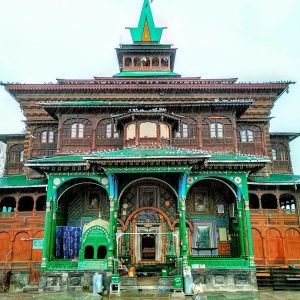

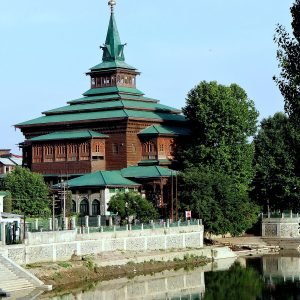
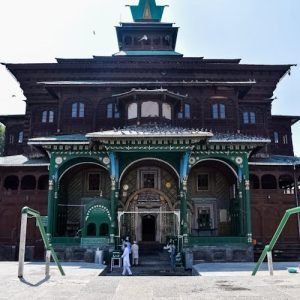
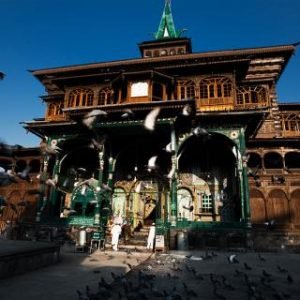
Table of Contents
ToggleThe Shah e Hamdan Shrine, otherwise known as Khanqah-e-Moula is an extremely sacred, religious and historic center in Srinagar, Kashmir. This shrine is revered in the name of Mir Sayyid Ali Hamadani, a learned Persian Sufi saint, scholar, and preacher who founded Islam in Kashmir during the 14th century. The Shrine is located on the banks of the Jhelum River and carries a rich significance in cultural and spiritual grounds for the Kashmiris.
1. Historical Significance
Shah e Hamdan, or Mir Sayyid Ali Hamadani (1314–1384 CE) was a prominent Sufi mystic born in Hamadan, Iran. He was a Kubrawiya order adept and traveled extensively throughout the Islamic world as a scholar and missionary of the peace, spirituality, and religious coexistence cause. His appearance in Kashmir during the tenure of Sultan Shihab-ud-Din was indeed a landmark in religious history of the region. This was the influential movement for Islamization of the Valley that gained mass popularity in those times, and his teachings left a long-lasting legacy in terms of arts and socialism.
Shah e Hamdan Shrine was built by Sultan Sikander in 1395 CE, years after the death of the saint, as an expression of love for the holy man. There were several restoration phases for the construction over time owing to natural disasters and erosion. Yet it still maintains its spiritual significance.
2. Architectural Features
The Shah e Hamdan Shrine is the epitome of traditional Kashmiri wooden architecture, which encompasses Persian, Central Asian, and indigenous designs. The shrine is an excellent example of medieval craftsmanship, and even after several restorations, it still retains its art form.
2.a. Exterior Design
The exterior walls of the Shah e Hamdan Shrine are adorned with inlaid wood carvings and motifs, which resemble “Khatamband,” an exclusive ceiling decoration of Kashmir that exposes geometric as well as floral motifs. The double-storey structure is covered by a pyramidal roof covered with wooden tiles. The shrine has walls painted in bright colors, primarily green, symbolizing peace, prosperity, and harmony. There are wood-designed balconies above the façade of the shrine. These beautiful crafted works and designs complement the beauty of the structure.
2.b. Interiors
Floral and geometric designs adorn the interior by papier-mâché work. The ceiling is a brilliant example of Kashmir’s traditional crafts, red and yellow hues with cedar wood, while the walls and ceilings are designed in gold and silver leaf art. Intricate wooden carvings have made the mihrab devotedly surrounded with a prayer and reflection.
2.c. Calligraphy and Inscriptions
Arabic and Persian inscriptions, mostly verses of the Quran and couplets extol of Shah e Hamdan, are done on the walls of the shrine. Beautifully designed with elaborate floral motifs and geometric patterns, the Islamic calligraphy gave twin beauty to this shrine both mystique and artistic expression.
3. Cultural and Spiritual Significance
The Shah e Hamdan Shrine is not only a memorial but more of a center to Kashmir’s spiritual and cultural life. Mir Sayyid Ali Hamadani’s influence in the Kashmiri society cuts across religious segregation. He is attributed with bringing various socio-cultural and economical reforms to Kashmir that defined the region’s cultural heritage.
3.a. Islamization
Mir Sayyid Ali Hamadani, one of the earliest Sufi saints who spread Islam in Kashmir, had great knowledge of Islamic jurisprudence, philosophy, and mysticism that persuaded the people of the land to come towards him, and through his peaceful methodology of spreading, many Kashmiris adopted Islam. He is known for his preachings on spiritual purification (Tazkiyah) and inner worship (Ihsan), which are the cornerstones of the philosophy of Sufis.
3.b. Introduction of Crafts and Trade
Not only did he bring to Kashmir various crafts and industries that later became the backbone of the economic and cultural culture of the region, but also brought skilled artisans from Persia with whom he introduced the famous Kashmiri shawl-weaving technique (Pashmina), carpet weaving, papier-mâché, and other handicrafts that are so central to Kashmiri culture. Influence of the saint through these crafts can be seen even in the contemporary Kashmir, where these industries thrive.
3.c. Impact on Social Reforms
Social justice and charity are the other principles taught by Shah e Hamdan. He was one of the most ardent adherents to welfare in front of the poor, weak, and oppressed human beings. During his time, his thoughts for the needy and humanity carried more qualities of justice and equality, hence making him more acceptable both to the Muslims and non-Muslims. He propagated simplicity, humility, and charity, something that has been habituated within the spiritual mentality of Kashmiris for centuries.
4. Pilgrimage and Religious Practices
The Shah e Hamdan Shrine continues to be an important shrine center among Sufis and people performing the rituals for Mir Sayyid Ali Hamadani. The shrine is visited to gain blessings, and perform prayers and religious rituals. Special religious sacrifices are taken on the saint’s Urs, which is the death anniversary, and are showcased by illuminating the shrine with guests attending night long prayers.
4.a. Sufi Practices
The Shah e Hamdan Shrine serves as a place for performing different Sufi exercises, such as meditation, Muraqaba, Quran recitation, and group prayers. Some of the critical components of spiritual practices conducted at the shrine are the concepts of “Zikr” adopted within Sufism, or the remembrance of God. People assemble to practice collective Zikr, which includes the recitation of divine praise and praise dedicated to the Prophet Muhammad (PBUH).
4.b. Social Welfare Works
Next to teachings of Shah e Hamdan, the shrine is also a place for charity and social work. In its special occasions like Eid or Saint’s Urs, free meal distribution (Langar) is provided to the needy section of the society. As a tradition of caring the poor it has been kept alive.
5. Tourism and Accessibility
The closest shrine to all four sides of Srinagar is the Shah e Hamdan Shrine. It is centrally located and accessible through local taxis, rickshaws, or buses. It is open all through the year, but summer would be the best season to visit since the weather in Srinagar is pleasant and the city is bustling with cultural and religious activities.
It is one of the deepest spiritual experiences for tourists but also provides an insight into the rich cultural heritage of Kashmir. Visitors are expected, however, to abide by certain dress codes and maintain the sanctity of the place. Women are supposed to cover their heads, and everyone is supposed to remove their shoes before getting inside the shrine.
5.a. Cultural Tours
The Shah e Hamdan Shrine is generally included in religious and cultural tours of Srinagar, which also take other important places like the Hazratbal Shrine, Jamia Masjid, and the Mughal Gardens on the tour. These tours will be able to provide some great insights into rich Islamic heritage and the architecture of Kashmir, and this particular blend with Persia and Central Asia.
6. Preservation and Restoration Efforts
Because of its historical and cultural importance, the Shah e Hamdan Shrine has been in the course of preservation and restoration work by many a local government, heritage bodies, and others regarding restoring damaged wooden architecture and intricate artwork.
Steps are also taken to archive and conserve the unique craftsmanship of the shrine, including papier-mâché work, wood carvings, and calligraphy. This architectural wonder shall be etched into the minds of generations to come.
7. Relevance to Modern World
Today, Shah e Hamdan Shrine is believed to be the epitome of cultural and religious pluralism of Kashmir. This shrine has remained a place of peace and spiritualism even though the rest of the region had such a turbulent history. It inspires devotees from all walks of life, both within and outside Kashmir, as it remains a uniting force through faith.
This is one of the lessons learnt from Mir Sayyid Ali Hamadani with his teachings in tolerance, compassion, and humanity, yet perfectly observable in modern times when religious and cultural conflicts are dominantly present. He evoked love, peace, and coexistence and manservantship to humanity, defining the great soul’s alive quotidian during the journey of generations reminding Kashmiris of their common heritage.
8. Conclusion
The Shah e Hamdan Shrine is not only a place of worship but the symbol of deep influence by the hands of a Sufi saint who really moulded the cultural, religious, and socio-economic set-up of Kashmir. Its baroque architecture stands as testimony to the spiritual legacy Mir Sayyid Ali Hamadani left behind in the form of teachings of love, peace, and service to humanity that people identify themselves with even today.
The Shah e Hamdan Shrine is one of the most oft-beloved landmarks in Kashmir. Its architectural beauty, rich history, and spiritual significance make it truly divine. Whether religion finds solace or culture is discovered, the site in the shrine is where the timeless essence of Kashmir can be experienced.
How to book a trip to Shah e Hamdan Shrine, India with Charzan Holidays?
For a seamless and exceptional booking experience, contact Charzan Holidays at reservations@charzan.in or call us at +919622224473.
People ask FAQ's
1. Who built the Shah e Hamdan mosque?
Also known as Khanqah-e-Moula, the Shah e Hamdan Mosque was in the year 1395 CE built by Sultan Sikandar in honor of the Persian Sufi saint Mir Sayyid Ali Hamadani, who introduced Islam into Kashmir. It is an important religious and cultural center in Srinagar, Kashmir.
2. Who made the first Masjid in Kashmir?
3. Who spread Islam in Kashmir?
Islam was introduced to Kashmir mainly by a 14th-century Persian Sufi saint, Mir Sayyid Ali Hamadani. He came to the region in the late 1300s and became the dynamo that helped popularise Islam in Kashmir. He made an immense effort that caused many conversions in the region, that groomed the religious image of Kashmir.
4. Where is Shah e Hamdan Shrine located?
Shah e Hamdan Shrine, also known as Khanqah-e-Moula, is located on the banks of River Jhelum in Srinagar, Kashmir. Khanqah-e-Moula lies near Zaina Kadal. The shrine is about Mir Sayyid Ali Hamadani, a Persian Sufi saint who did a great job in spreading Islam in Kashmir.
Frequently Asked Questions
1. What is the Shah-e-Hamdan Shrine? | |
| The Shah-e-Hamdan Shrine, also known as the Khanqah of Shah-e-Hamdan, is a revered Sufi shrine in Srinagar, dedicated to Mir Sayyid Ali Hamadani, a prominent saint and preacher of Islam in Kashmir. | |
2. Why is the shrine significant? | |
| The shrine is significant for its historical and spiritual importance, being a center for Sufism and attracting numerous devotees and tourists who come to pay their respects. | |
3. Where is the Shah-e-Hamdan Shrine located? | |
| The shrine is located in the Khawaja Bazaar area of Srinagar, near the banks of the Jhelum River. | |
4. What architectural style is the shrine known for? | |
| The shrine is known for its stunning Indo-Saracenic architecture, characterized by intricate wood carvings, colorful decorations, and a beautifully painted ceiling. | |
5. Is there an entry fee to visit the shrine? | |
| No, there is no entry fee to visit the Shah-e-Hamdan Shrine. Donations for maintenance and upkeep are welcome but not mandatory. | |
6. What are the visiting hours for the shrine? | |
| The shrine is open to visitors throughout the day, with peak visiting hours typically in the morning and late afternoon. | |
7. Can I offer prayers or perform rituals at the shrine? | |
| Yes, visitors can offer prayers, light candles, and perform rituals in honor of the saint, reflecting the Sufi traditions of devotion. | |
8. Are there any facilities available for visitors? | |
| Basic facilities such as restrooms and seating areas are available. However, amenities may be limited, so plan accordingly. | |
9. Is Shah-e-Hamdan Shrine safe for tourists? | |
| Yes, the shrine is generally safe for tourists. It is well-guarded and frequented by locals and visitors alike. | |
10. Can I take photographs inside the shrine? | |
| Photography policies may vary. It’s best to ask for permission before taking pictures inside the shrine. | |
11. What local cuisine can I try near the shrine? | |
| There are local eateries nearby where you can enjoy traditional Kashmiri dishes, such as Rogan Josh, Yakhni, and various breads. | |
12. Are there accommodations nearby? | |
| Yes, there are various accommodation options in Srinagar, including hotels and guesthouses, located within a short distance from the shrine. | |
13. What should I be aware of before visiting? | |
| Respect the local customs and dress modestly when visiting the shrine. Be prepared for potential crowds, especially during religious events. | |
14. What is the local currency used in the area? | |
| The local currency is the Indian Rupee (INR). ATMs are available in Srinagar, but it’s advisable to carry cash for smaller purchases. | |
15. What local attractions are near the Shah-e-Hamdan Shrine? | |
| Nearby attractions include the Jhelum River, historic markets, and other significant mosques and shrines in Srinagar. |


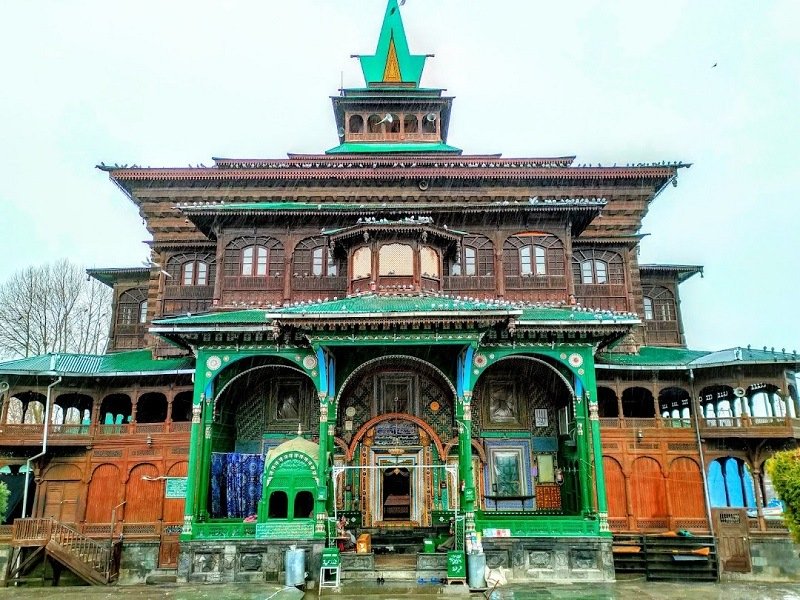
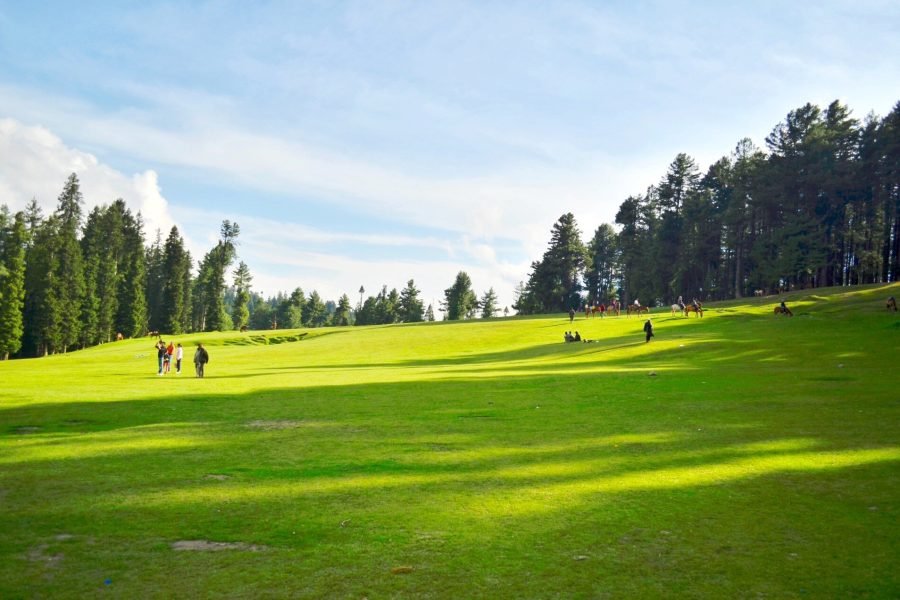

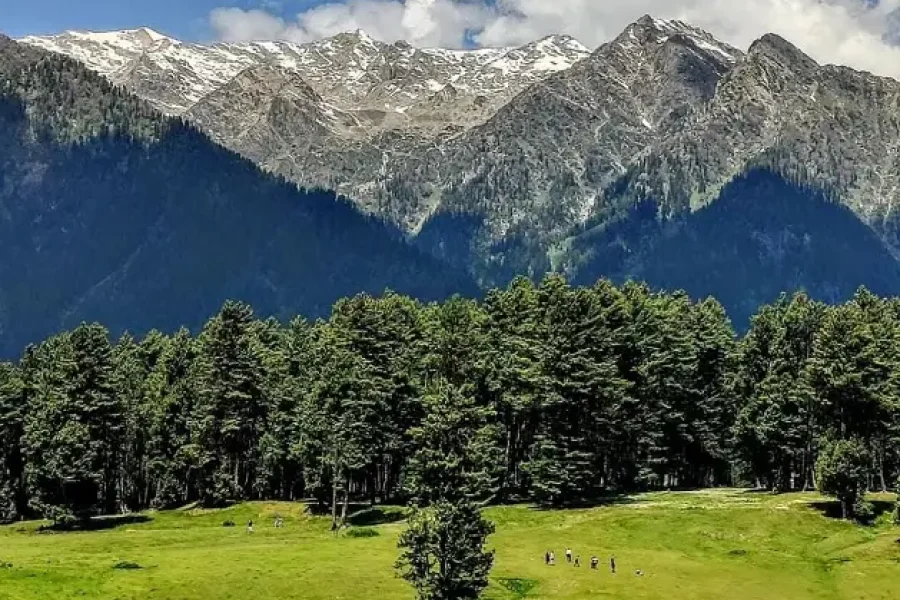
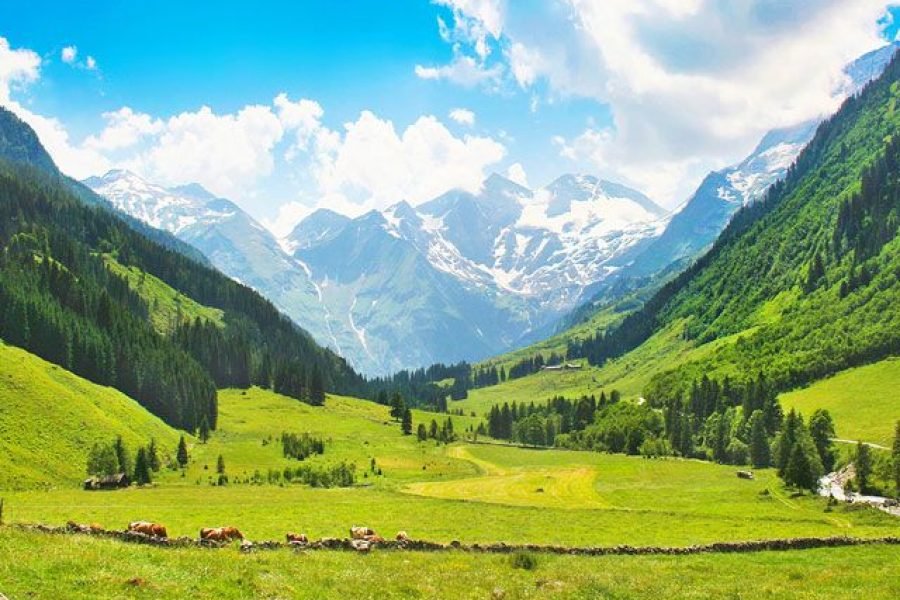
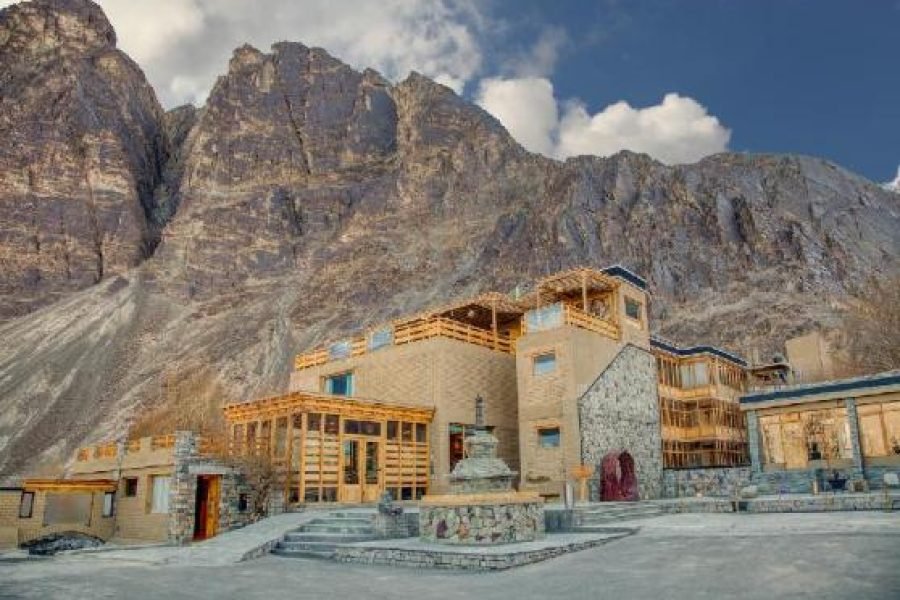

0 Comment